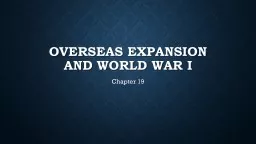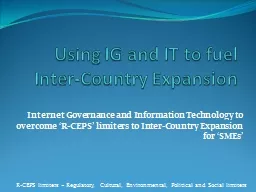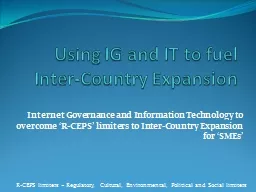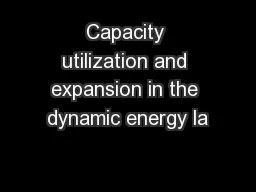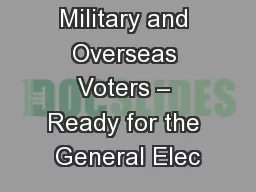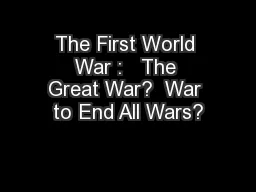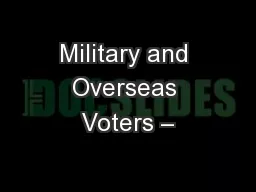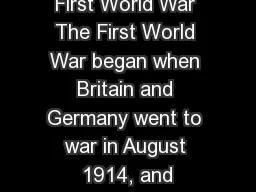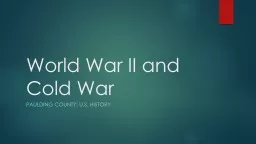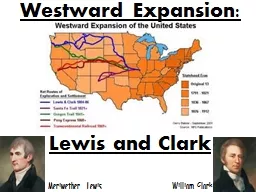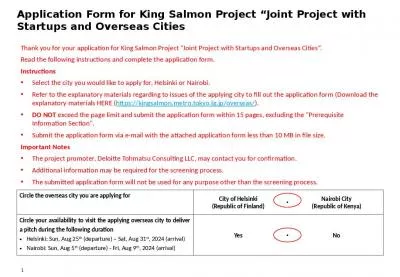PPT-Overseas Expansion and World War I
Author : myesha-ticknor | Published Date : 2017-08-21
Chapter 19 Unit 12 Vocabulary Imperialism Yellow Journalism Rough Riders Open Door Policy Theodore Roosevelt Roosevelt Corollary Panama Canal Expansionist Central
Presentation Embed Code
Download Presentation
Download Presentation The PPT/PDF document "Overseas Expansion and World War I" is the property of its rightful owner. Permission is granted to download and print the materials on this website for personal, non-commercial use only, and to display it on your personal computer provided you do not modify the materials and that you retain all copyright notices contained in the materials. By downloading content from our website, you accept the terms of this agreement.
Overseas Expansion and World War I: Transcript
Download Rules Of Document
"Overseas Expansion and World War I"The content belongs to its owner. You may download and print it for personal use, without modification, and keep all copyright notices. By downloading, you agree to these terms.
Related Documents

